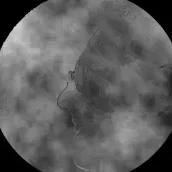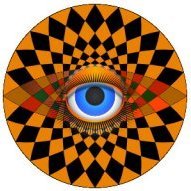
davide445
-
Posts
68 -
Joined
-
Last visited
Reputation Activity
-
 davide445 got a reaction from Ldina in Turn day to night in playroom interior
davide445 got a reaction from Ldina in Turn day to night in playroom interior
Thanks @Ldina@firstdefence, I really need to refrain from licking the screen using this forum, during the years I have got so many useful hints and examples from talented professionals, I don't know what will become under the new ownership but sure this is something that encourage using the tool.
Just to give a closure, in the end I applied the approach to another image I generated using SD3, here the day and night version
-
 davide445 reacted to Ldina in Turn day to night in playroom interior
davide445 reacted to Ldina in Turn day to night in playroom interior
@davide445 I liked what @firstdefence did with his 'moonlight glow' edit. My previous post simply darkened the window, which is what you originally requested. In this version, I took it a bit further (inspired by firstdefence), but used slightly different tools and methods. I'll attach a JPG for viewing online, and the afphoto file from which it was exported, so you can see what was done. You can play with the adjustment layers or delete them, as desired. There are dozens of tools, as well as interpretations, for a day to night image like this. This is just one. It all depends on what you want, i.e., darker/lighter, more or less saturated/contrasty, intense moon glow or none at all, etc. Hope this helps some.
2 AA Playroom-2.afphoto
-
 davide445 reacted to firstdefence in Turn day to night in playroom interior
davide445 reacted to firstdefence in Turn day to night in playroom interior
You could make a selection and use a gradient to darken the bottom of the window and keep the top part lighter, then simulate moonlight shining in.
-
 davide445 reacted to Ldina in Turn day to night in playroom interior
davide445 reacted to Ldina in Turn day to night in playroom interior
@davide445 Davide, here is one possibility, among many.
I added a Curves Adjustment Layer to adjust the brightness and contrast of the window area. Then I added a Live Luminosity Range Mask to limit the effect the the brighter areas. If you click the "Preview" checkbox in the Luminosity Range Mask window, you can see a representation of what portion will be masked as you adjust the spline graph. I added a slight bit of blur radius in the same window to soften the transitions a bit.
This still affected the bright even highlights on the rug, so I used a soft edged paintbrush and used black to paint onto the luminosity range mask, which hid the effect on the rug itself.
You'd have to play with the Curves and Luminosity Range Mask settings to get what you want. I also lowered the opacity of the Curves layer to 70% because it looked too strong (to me) at 100%. You could try the same masking approach with a Recolor Adjustment, HSL, Brightness/Contrast, Levels, etc.The attached afphoto file shows what I did on the topmost layer. This may not be the effect you are looking for, but it may give you some ideas..
2 AA Playroom-2.afphoto
-
 davide445 reacted to NotMyFault in Change light artefact transparency/darkness
davide445 reacted to NotMyFault in Change light artefact transparency/darkness
Why not using a simple curve adjustments to lighten the darker areas?
-
 davide445 reacted to Leigh in I'm trying to install Affinity V2 on Windows and it's failing with Error 0x80073CF3. Why?
davide445 reacted to Leigh in I'm trying to install Affinity V2 on Windows and it's failing with Error 0x80073CF3. Why?
If you're trying to install the Affinity Store or Microsoft Store version of Affinity on Windows and it's failing with the following reason:
Windows cannot install package ... because a different package ... with the same name is already installed. Remove package ... before installing. (0x80073cf3)
This indicates that there's already an existing version of the app installed. An example of this would be downloading and installing V2 directly from the Affinity Store and then trying to install Affinity V2 again directly from the Microsoft Store. You can go to Apps > Apps & features to see if you have an existing version installed.
Please Note: Because of this behavior it's not possible to have both the Affinity Store and Microsoft Store versions of Affinity V2 apps installed alongside each other on the same device.
-
 davide445 reacted to nickbatz in AI generative Fill in Affinity
davide445 reacted to nickbatz in AI generative Fill in Affinity
And all about not caring about the soul of humanity.
Using AI as a tool, fantastic. It promises to have a lot of great uses in medicine, for example.
But this is not using AI as a tool, it's using it as a substitute for artistic expression. That is pure evil.
-
 davide445 got a reaction from NotMyFault in Style transfer between two images
davide445 got a reaction from NotMyFault in Style transfer between two images
In the end I corrected the "soldatino" light curve so that become more in line with the ballerina.
-
 davide445 reacted to NotMyFault in Style transfer between two images
davide445 reacted to NotMyFault in Style transfer between two images
I would adjust both with curves, set to LAB mode.
the soldanino is too dark, reaching only 75% brightness. Darkening the ballerina so much will not look right.
-
 davide445 reacted to firstdefence in Style transfer between two images
davide445 reacted to firstdefence in Style transfer between two images
You can create a colour palette from an image and then use those colours to paint over the ballerina onto a pixel layer with a blend mode set to something like darker colour. You can also use selections and then the recolour adjustment filter.
https://affinity.help/photo2/English.lproj/pages/Panels/swatchesPanel.html
-
 davide445 got a reaction from Westerwälder in AI generative Fill in Affinity
davide445 got a reaction from Westerwälder in AI generative Fill in Affinity
After testing all this tools, I can say from my perspective I returned 100% using Affinity for my needs.
AI is great and probably with more available effort I would have been able to get out something useful, but so far
- Krita UX is totally counterintuitive/buggy/inconsistent so that even trivial activities like using a mask become a pain
- AI diffusion plugin never generate what I was needing/expecting due to bugs/inner complexities
- AI instant segmentation and selection was working farily well, but refining the results with Krita needed a huge time with subpar results
- Using the web UI never took off in my usage needs
Of course all of these are marveleous tools with tons of beautiful features, but my experience is they need much more effort than expected to get out something useful.
-
 davide445 reacted to David in Яuislip in Refine x128 upscaled image
davide445 reacted to David in Яuislip in Refine x128 upscaled image
The scabby lines highlighted by the red were attacked with rectangular marquees and Edit/Inpaint. Then cut the lot out with a pen rather than raster deleting. There's a path in the attached file. It's a bit brutal and may not be anatomically correct but given the %upscaling......
dancer.zip
-
 davide445 reacted to AffinityJules in Refine x128 upscaled image
davide445 reacted to AffinityJules in Refine x128 upscaled image
1. Use pen tool to cut around the subject as desired. I used 0.4 of feathering to reduce any hard edge.
2. Use smudge brush to paint over any pixelation on the image.
3. Use the clone brush to replace any parts missing from the edge after cutting out with the pen tool.
4. I replaced the black background to make the difference more noticeable.
There are lots ways to approach something like this and each method, although a different path, will usually lead to the same result.
-
 davide445 got a reaction from Alfred in Refine x128 upscaled image
davide445 got a reaction from Alfred in Refine x128 upscaled image
Used open source https://www.upscayl.org/
Twice 8x as supported generate an unknown error.
-
 davide445 got a reaction from joe_l in Importing Musescore sheet music in Publisher 1.10 no notes are shown
davide445 got a reaction from joe_l in Importing Musescore sheet music in Publisher 1.10 no notes are shown
The EPS trick worked thanks, sure using AP for this humble activities is far from the glory it deserves, but luckily I'm using it (not as frequently I would like) also for more creative activities. Now the real works on the music begun
-
 davide445 reacted to Dan C in Importing Musescore sheet music in Publisher 1.10 no notes are shown
davide445 reacted to Dan C in Importing Musescore sheet music in Publisher 1.10 no notes are shown
Hi davide445
Bravura seems to work fine, but the MScore font has unsupported characters as noted in the Font Manager.
joe_l's suggestion is likely the best solution in this case.
Meanwhile i've reported this for the devs to take a look at.
Lee
-
 davide445 reacted to joe_l in Importing Musescore sheet music in Publisher 1.10 no notes are shown
davide445 reacted to joe_l in Importing Musescore sheet music in Publisher 1.10 no notes are shown
The Affinities have problems with the fonts. A workaround could be to save the PDF as EPS and then opening in APublisher / ADesigner. Please note, that in this case all fonts are converted to curves. See attached EPS. Or open in Inkscape.
Canon_in_D_Violin_Duet.eps
-
 davide445 reacted to NotMyFault in Voronoi effect low resolution
davide445 reacted to NotMyFault in Voronoi effect low resolution
The measures listed in the first post are not clear.
What DPI will you use for the final poster of 170x200cm? Do you use about 25k pixel for 200cm (300dpi)?
If you zoom in to 100% (pixel view), of course there will be visible jagging, but now the dots far far smaller and less noticeable compared to using 5000px (about 75 DPI).
-
 davide445 reacted to NotMyFault in Voronoi effect low resolution
davide445 reacted to NotMyFault in Voronoi effect low resolution
Voronoi is a pixel filter, as all filters. But is uses the full resolution of the document, there is no artificial limit.
Yes, only solution.
-
 davide445 reacted to GarryP in Creating 3d ribbons in Publisher
davide445 reacted to GarryP in Creating 3d ribbons in Publisher
Thanks for the extra information.
Note: The video you are watching uses Designer, not Publisher, and they have different functionalities. It doesn’t matter in this case but it’s worth keeping in mind.
Joining and closing curves can be a ‘finicky’ business and I don’t understand all of the various ‘foibles’ of those functionalities.
As thomaso said above, the direction of each curve matters a lot in most cases.
In this case, once you have joined and closed the curves you can use Geometry Add on the result to remove the ‘extra bits’.
See my attached video.
Note: The result of the YouTube video isn’t very realistic because the shadow is only on one side of the ribbon.
2023-05-22 09-10-54.mp4 -
 davide445 reacted to thomaso in Creating 3d ribbons in Publisher
davide445 reacted to thomaso in Creating 3d ribbons in Publisher
Your screenshot does not show nodes or handles, so it is hard to judge what exactly was drawn / what we look at indeed.
Just in case: Your text description made me think of issues with the handles when joining/closing two curves, caused by the direction they where dragged when drawn before, for instance:
-
 davide445 got a reaction from firstdefence in Disaligned elements enlarging sheet music PDF
davide445 got a reaction from firstdefence in Disaligned elements enlarging sheet music PDF
This is working thanks
-
 davide445 reacted to firstdefence in Disaligned elements enlarging sheet music PDF
davide445 reacted to firstdefence in Disaligned elements enlarging sheet music PDF
Hold down shift and use this handle
-
 davide445 reacted to thomaso in Hand painting effect on image and spline
davide445 reacted to thomaso in Hand painting effect on image and spline
The font looks like a 3D rendering. How about simulating it with the Smudge Brush Tool (B)?
-
 davide445 reacted to walt.farrell in Hand painting effect on image and spline
davide445 reacted to walt.farrell in Hand painting effect on image and spline
That "font" looks like Abstract ABC by Chroma Supply, available as Assets from the Affinity Store.
If I were trying to do something compatible with that, I'd probably start with Abstract Paint by Chroma Supply, also available from the Affinity Store, and try overlaying your ballerina with one of the overlays available in that asset package, experimenting with opacity, blend modes, and masking as necessary.



